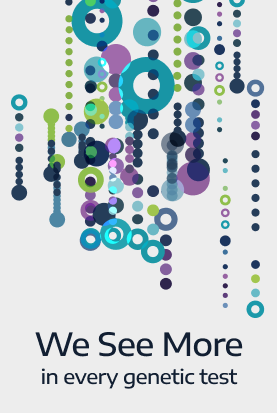
MISSED BY OTHERS, DETECTED BY US
IriSight® Case Study
Clinical presentation
A multigravida with noted reduction in fetal movement underwent an anatomy scan at 17 weeks gestation. The following fetal findings were noted:
- Microcephaly, microtia, micrognathia
- Hypospadias
- Dysgyria & cerebellar hypoplasia
Previous genetic testing
On a prior pregnancy with similar phenotypes, testing was performed with negative results including:
- Whole exome sequencing

IriSight® Testing
was ordered because of its ability to identify all major variant types in a single test.
Results and interpretation
Variantyx IriSight® testing identified compound heterozygous, maternally and paternally inherited SNVs within the RNU4ATAC gene.
Diagnosis: RNU4ATAC-related developmental disorders

Uniform data from WGS clearly shows both inherited SNVs in the non-coding RNU4ATAC gene.
The Variantyx Difference
Why were these variants detected by IriSight® testing, and not detected by exome testing of the prior pregnancy?
-
The variants fall within an sncRNA gene. Other tests focus predominantly, if not exclusively, on protein-coding genes.
-
While exomes have the potential to include sncRNA genes, a survey of commercial exome probe sets shows that only 2 in a representative sample targets RNU4ATAC.

Variantyx genome analysis provides truly comprehensive mitochondrial and nuclear gene coverage, including analysis of sncRNAs. With a detection range from 1bp to whole chromosomal events, Variantyx genome analysis easily detects both SNVs.
Want similar results for your patients?
Connect with a Clinical Specialist to find out how easy it is to bring the power of whole genome sequencing into your practice.



